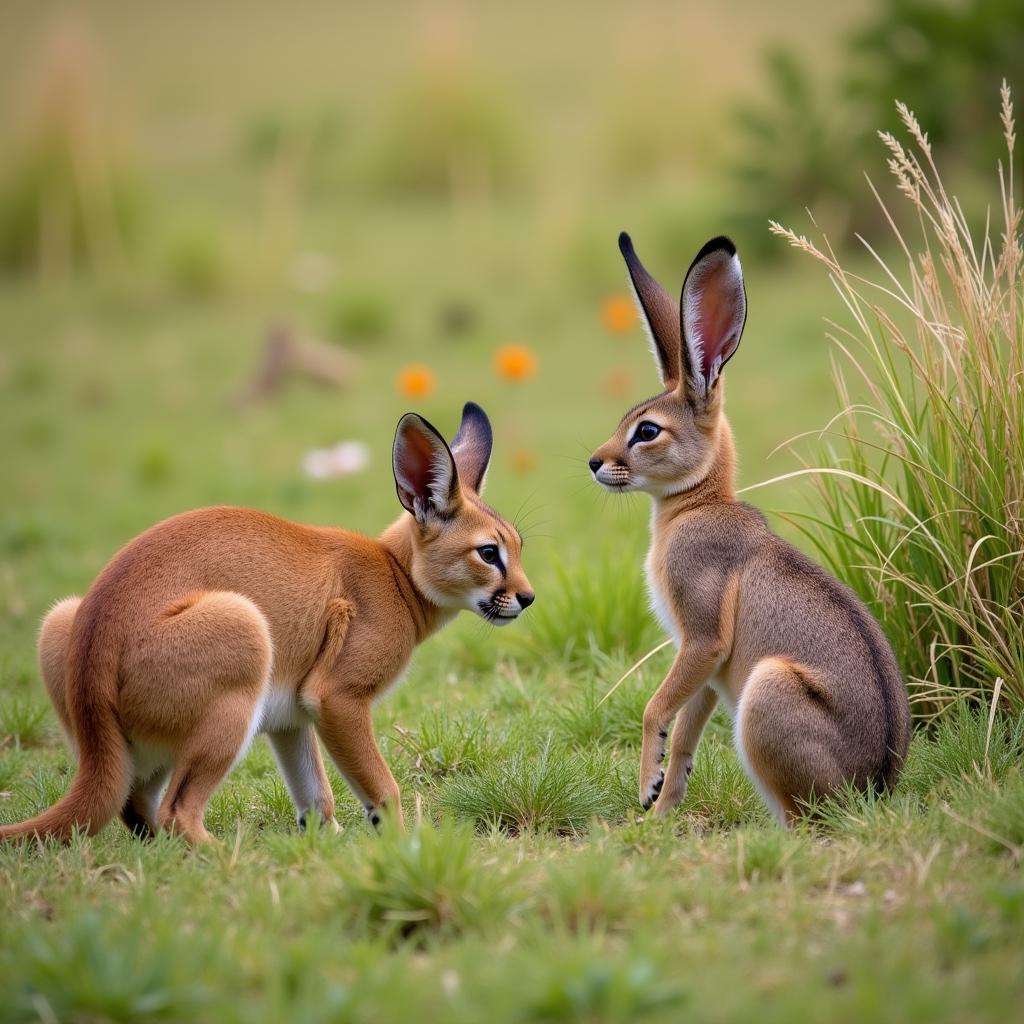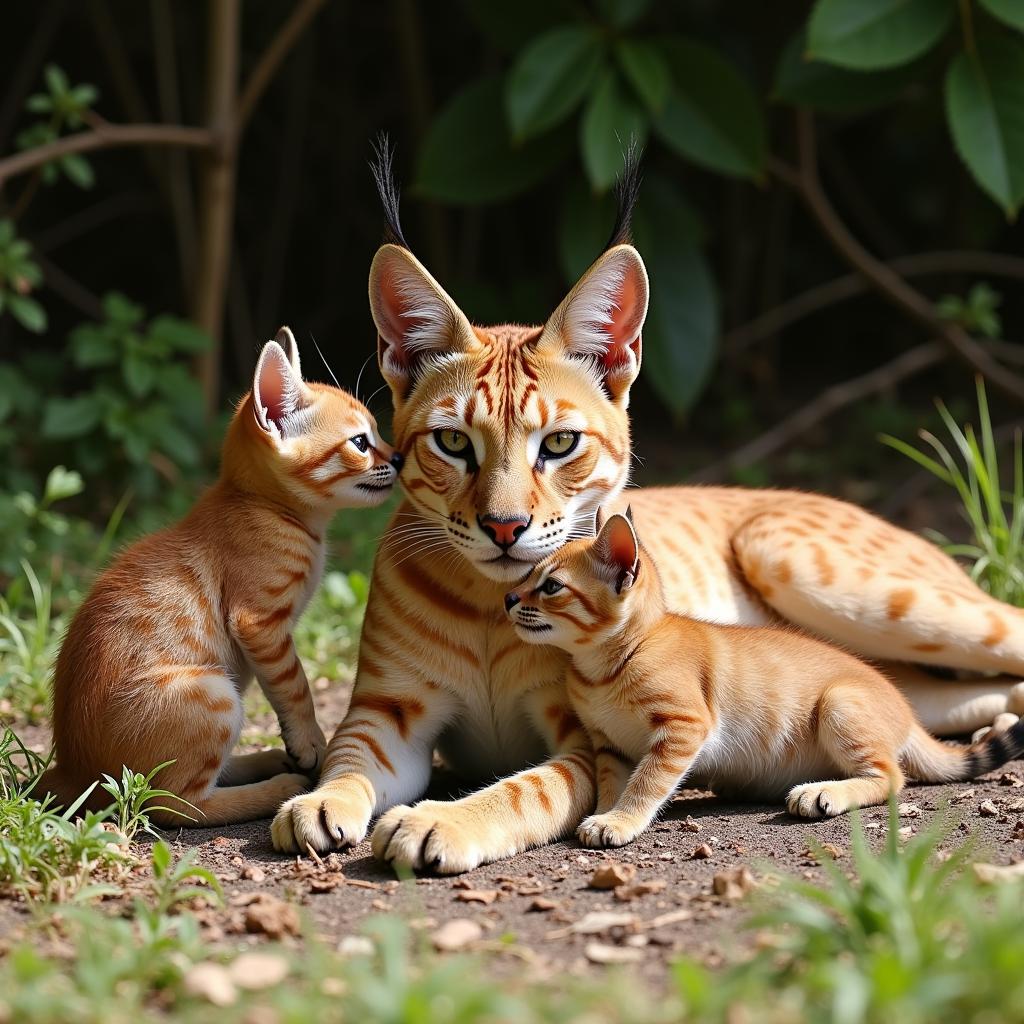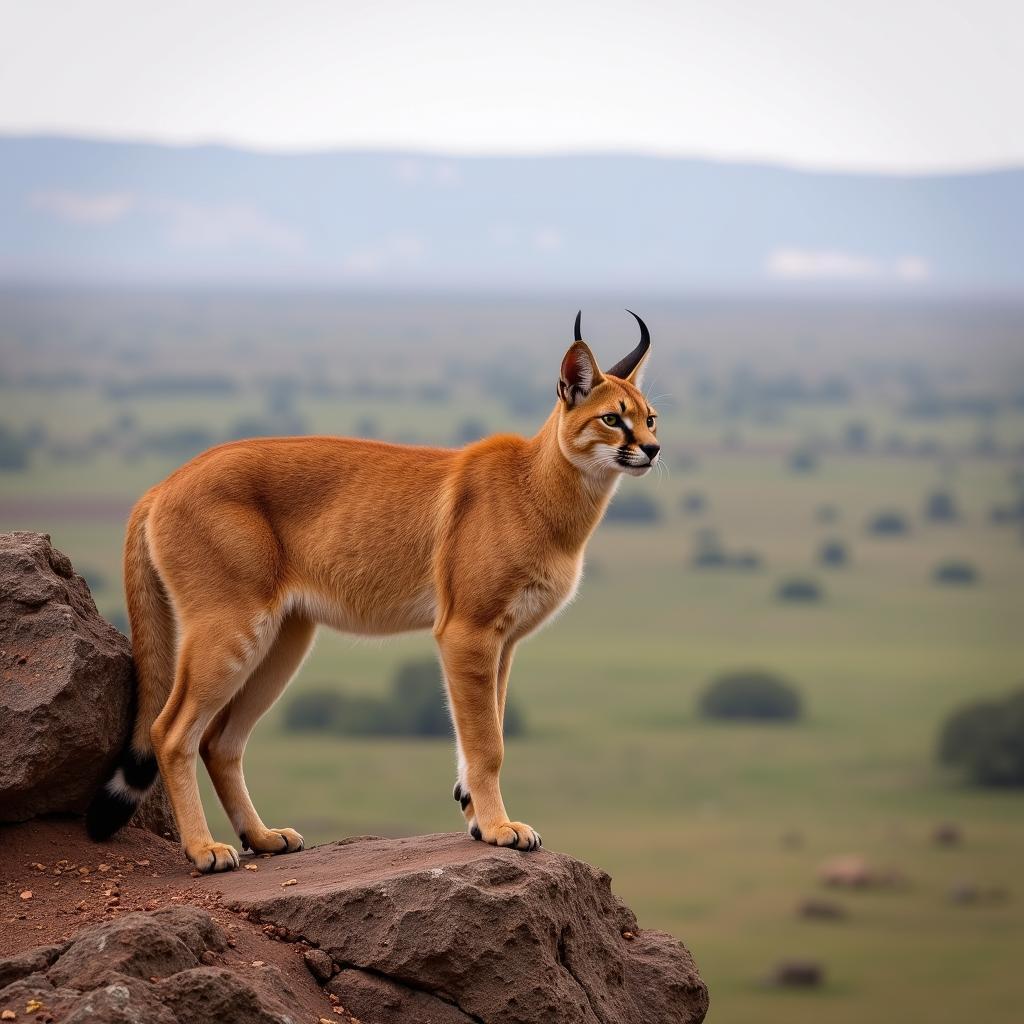Unveiling the Secrets of the African Caracal
The African Caracal, a medium-sized wild cat native to Africa, Asia, and the Middle East, is a captivating creature known for its distinctive appearance and elusive nature. This article delves into the fascinating world of the caracal, exploring its unique characteristics, habitat, behavior, and the challenges it faces in the wild. Let’s embark on a journey to uncover the secrets of this remarkable feline.
Caracals are easily recognizable by their long, tufted ears, which are tipped with black fur, giving them an almost lynx-like appearance. Their sleek, short coat ranges from reddish-brown to sandy-grey, providing excellent camouflage in their natural habitat. These agile predators are perfectly adapted to a variety of environments, from arid savannahs and scrublands to mountainous regions and even forested areas. Adaptability is a key factor in their survival. Here, you’ll discover more about these fascinating creatures and their remarkable ability to thrive in diverse environments. You can see more pictures of caracals in diverse locations at african caracal images.
The Physical Prowess of the African Caracal
The caracal’s physical attributes are a testament to its hunting prowess. Its powerful legs allow it to leap impressive heights, up to 10 feet, and capture prey in mid-air. Its sharp claws and teeth are perfectly designed for taking down a variety of prey, including small mammals, birds, and reptiles. What makes them exceptional hunters is not only their physical abilities but also their cunning and stealth.
What Does an African Caracal Eat?
The African caracal’s diet consists primarily of small to medium-sized animals. They are known to hunt rodents, hares, hyraxes, and even small antelopes. Their agility also allows them to prey on birds, catching them in flight with remarkable precision. Caracals are opportunistic feeders and will adapt their diet based on the availability of prey in their territory.
 African Caracal Hunting a Hare
African Caracal Hunting a Hare
Where Does the African Caracal Live?
Caracals are found throughout Africa, with populations also present in parts of Asia and the Middle East. They prefer habitats with dense vegetation, which offers cover for stalking prey. Their adaptability allows them to thrive in various environments, from dry savannahs and scrublands to forested areas and mountainous regions.
The Social Structure of the African Caracal
Caracals are typically solitary animals, except during mating season and when raising young. They are territorial and will defend their territory from other caracals. Females give birth to litters of one to six kittens, which they raise alone. The kittens stay with their mother for up to a year, learning essential survival skills before venturing out on their own.
 African Caracal Mother and Kittens
African Caracal Mother and Kittens
Threats to the African Caracal
Despite their adaptability, African caracals face several threats. Habitat loss due to human encroachment and agricultural expansion is a significant concern. They are also sometimes hunted for their fur or killed by farmers who perceive them as a threat to livestock. Conservation efforts are crucial to ensuring the long-term survival of this remarkable species. Learn more about similar African animals, like the African Savannah cat. african savannah cat.
What is the Lifespan of an African Caracal?
Caracals can live up to 12 years in the wild and even longer in captivity. Their lifespan in the wild is often impacted by factors such as predation, disease, and human activity.
Conservation Efforts for the African Caracal
Various organizations are dedicated to protecting caracals and their habitat. These initiatives focus on raising awareness, promoting sustainable land management practices, and combating illegal hunting. Protecting this magnificent creature requires a collaborative effort, involving local communities, governments, and conservation organizations. You can explore information about other large African cats african big puss. There are exciting projects underway to protect these majestic animals, including international collaborations to reintroduce cheetahs back into their natural habitats, like the initiative to relocate african cheetah india.
 African Caracal in Natural Habitat
African Caracal in Natural Habitat
Conclusion: Protecting the Future of the African Caracal
The African caracal, with its unique appearance and impressive hunting skills, is a vital part of the African ecosystem. Understanding the challenges this species faces is crucial for implementing effective conservation strategies. Protecting the caracal’s habitat and mitigating human-wildlife conflict are essential for ensuring its long-term survival. Let’s work together to protect the future of the African caracal and preserve the rich biodiversity of our planet. For more stunning images of African wildlife, you can also browse through a collection of african antelopes images.
FAQ
- What is the most distinctive feature of the African caracal? Their long, black-tufted ears.
- What kind of habitat does the African caracal prefer? Areas with dense vegetation for stalking prey.
- What are the main threats to the African caracal population? Habitat loss and hunting.
- How long do African caracals live? Up to 12 years in the wild and longer in captivity.
- Are African caracals social animals? They are generally solitary, except during mating season and when raising young.
- What do African caracals eat? Small to medium-sized animals, including rodents, birds, and reptiles.
- How high can African caracals jump? Up to 10 feet.
Need More Information?
If you have any questions or need assistance, please don’t hesitate to contact us:
- Phone: +255768904061
- Email: kaka.mag@gmail.com
- Address: Mbarali DC Mawindi, Kangaga, Tanzania.
Our customer service team is available 24/7.


